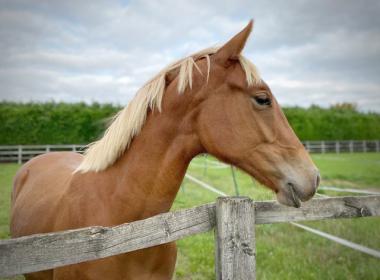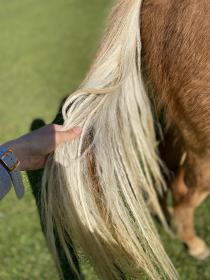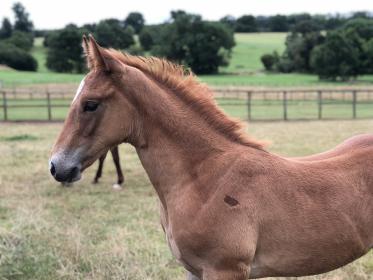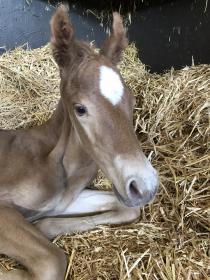Good day everyone!
I have been trying to determine the colour of one of our fillies.
2019 filly by Goodtimes and out of chestnut Vandavid x Julio Mariner KWPN mare. So a dark bay stallion and a chestnut mare.
filly was born with very pink skin and grey/blue eyes. Now they are quite dark brown. She looked like a chestnut foal but over the winter seemed to have lightened her mane and now is very flaxen. Her tail seems to have all the colours in it, from dark brown to white.
[ATTACH=JSON]{“data-align”:“none”,“data-size”:“full”,“title”:“28A394A9-162D-4ECE-A1B6-FA766003B172.jpeg”,“data-attachmentid”:10727873}[/ATTACH]
[ATTACH=JSON]{“data-align”:“none”,“data-size”:“full”,“title”:“74D0DBCD-EB58-4D50-B378-8B5A2F4AECC6.jpeg”,“data-attachmentid”:10727872}[/ATTACH]
[ATTACH=JSON]{“data-align”:“none”,“data-size”:“full”,“title”:“63F1B118-C59B-4EF3-8314-FCE5C934D982.jpeg”,“data-attachmentid”:10727871}[/ATTACH]
[ATTACH=JSON]{“data-align”:“none”,“data-size”:“full”,“title”:“DDCCA25B-0F87-4721-814F-1D279FA2289E.jpeg”,“data-attachmentid”:10727870}[/ATTACH]
Help from those, who know colour would be greatly appreciated.





 but I am sure they could also have a mix of hairs in addition to the white blonde color.
but I am sure they could also have a mix of hairs in addition to the white blonde color.